Campus crime rates are generally lower than the national average;however thousands of crimes take place on college campuses daily.Cities that are notoriously dangerous would likely be undesirable locations for a college campus.A study examined the crime rates on campuses throughout the United States and whether or not they were significantly affected by surrounding cities.A regression analysis was performed to investigate which characteristics of a city,along with a few chosen demographics of a school,impacted the crime rate on a college campus.There are over 4000 colleges and universities in the United States.The study included a random sample of 129 institutions.The response variable was the number of crimes per 1000 people.Explanatory variables included the percent of married couples in the city (married) ,tuition of the university (tuition) ,average income of the city (income) ,unemployment rate of the city (unemployment) ,percent of students who belong to a fraternity or sorority (Greek) ,average age of the students at the university (age) ,and number of liquor stores in the city (liquor) .A complete analysis of the data is shown below. 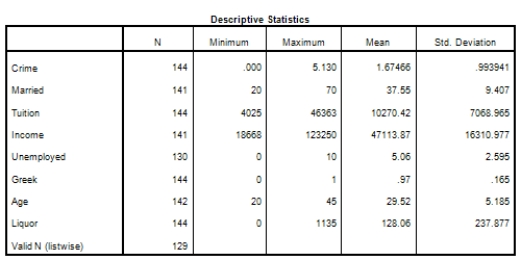
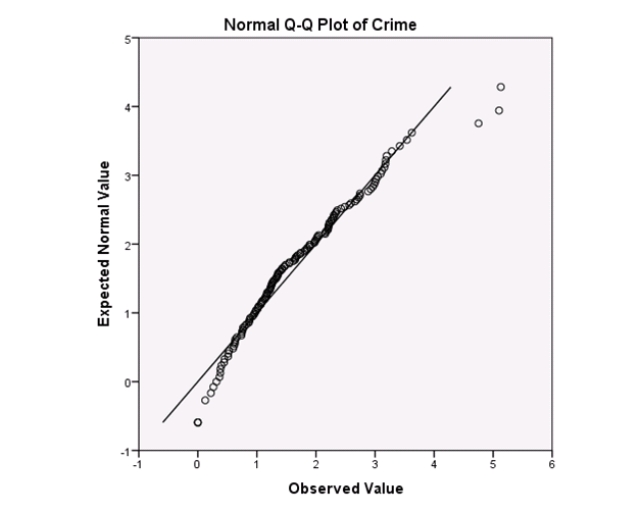
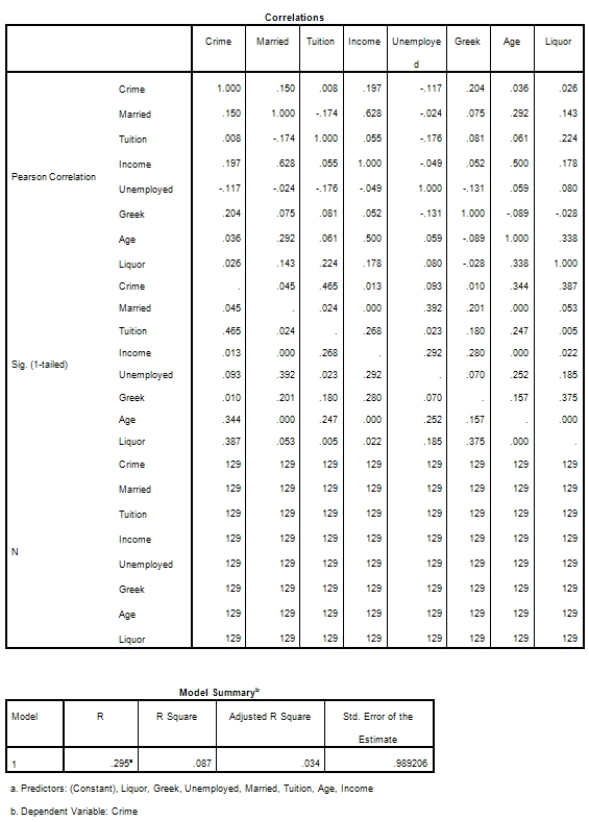
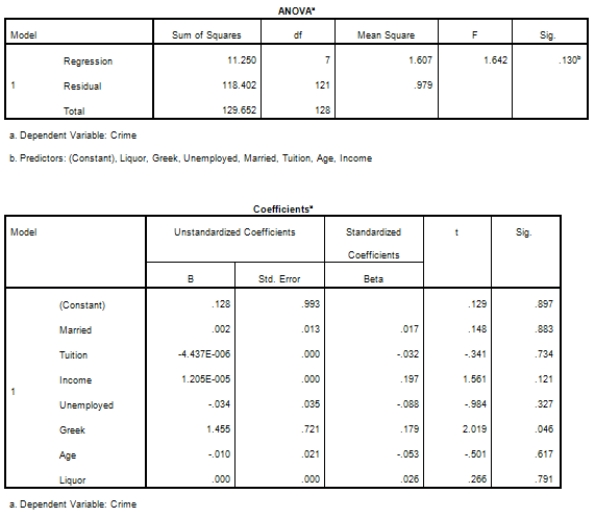
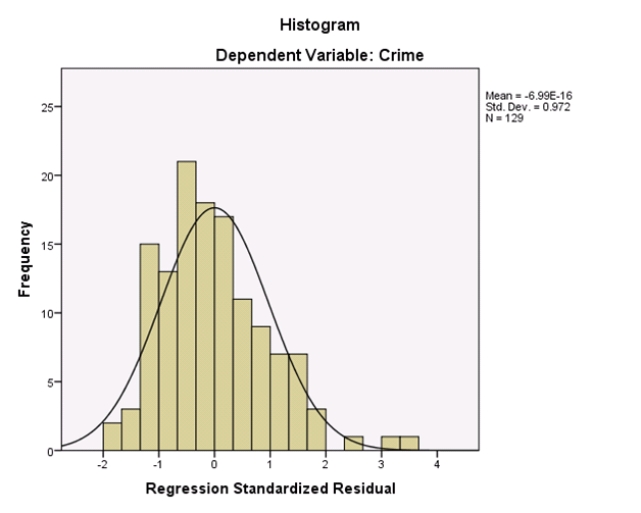
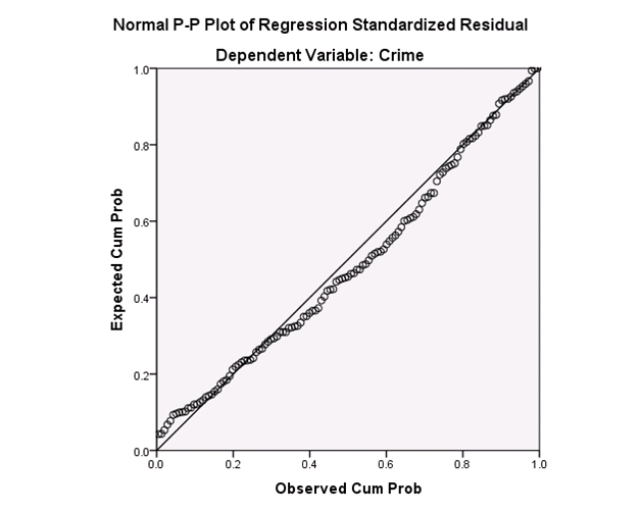 Does the significance test for the individual regression coefficients for marriage and income contradict the information we obtained from the correlation table?
Does the significance test for the individual regression coefficients for marriage and income contradict the information we obtained from the correlation table?
A) Yes,both marriage and income are correlated with crime and the correlation is statistically significant.Therefore,something is wrong with the regression analysis.
B) No,marriage and income are both highly correlated with each other.Therefore,there is likely a significant overlap of the predictive information from these variables.
Correct Answer:
Verified
Q75: Many people believe that parents' marital status
Q76: Campus crime rates are generally lower than
Q77: Campus crime rates are generally lower than
Q78: Campus crime rates are generally lower than
Q79: Many people believe that parents' marital status
Q81: The variable color takes on values red,green,blue,and
Q82: A mortality benefit for breast cancer from
Q83: Below is a table that provides the
Q84: Campus crime rates are generally lower than
Q85: Malaria is a leading cause of infectious
Unlock this Answer For Free Now!
View this answer and more for free by performing one of the following actions

Scan the QR code to install the App and get 2 free unlocks

Unlock quizzes for free by uploading documents